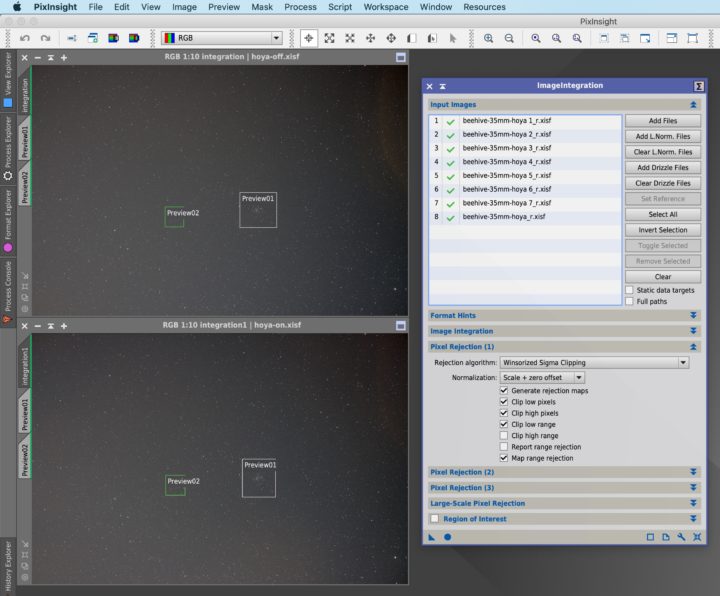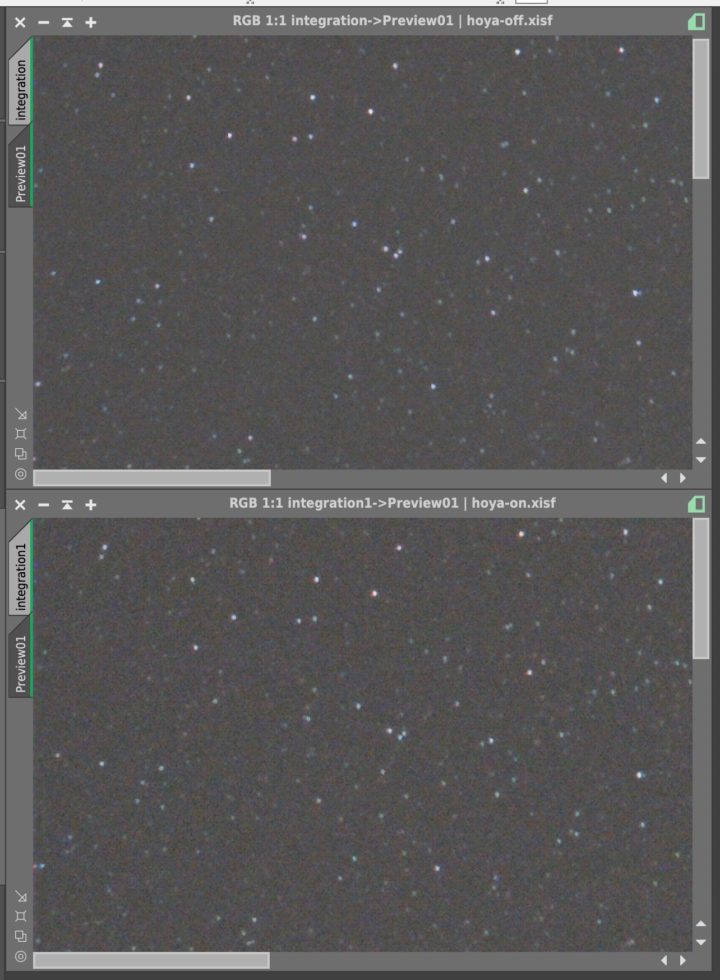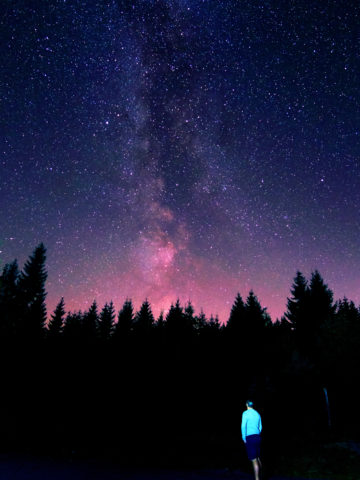Hoya Red Intensifier RA54 (sometimes called Hoya Red Enhancer or, for the most recent version, Starscape) is a photography filter designed for shooting landscapes in colorful, reddish Autumn (as its name says - it enhances red color). Yet, by the way, the filter is often used as a budget light pollution filter for astrophotography. Does this filter work well for astro-imaging? Check out my review of this filter and sample comparison images.

Hoya Red Intensifier Specification
| Filter | Hoya Red Enhancer (Intensifier/Starscape) RA54 |
| Glass Type | Hoya Didymium |
| Filter Factor | 1.5 |
| F/Stops | ½ |
| Frame Construction | Low Profile/Aluminum |
| Front Filter Threads | Yes |
| Multi-Coating | No |
| Anti-Static | No |
| Hardened Top Layer | No |
Hoya Red Intensifier Sample Images
All the pictures here are taken with my Fuji X-T20 camera and my Fornax Lightrack II equatorial mount (if tracked).
Landscape


City center, headlamps


Deep-Sky
Unprocessed

With Manual Post-Processing
As you can see, there are huge quality improvements in automatically created JPEGs. But what about RAWs? Can we do the same as the filter in post-processing? Let's see. I took 16 pictures (30 s single exposure time) of the Beehive Cluster and its surroundings from my balcony with my 35mm Fujinon lens - 8 with the filter, and 8 without. This is how single JPEGs looks like unprocessed:


Let's post-process those RAWs in PixInsight the very simple way - stacking, background extraction, color calibration, and denoising. I will apply the same processes with default values to both stacks individually.


Let's process them - DynamicCrop (to remove the flare on the right), AutomaticBackgroundExtraction, BackgroundNeutralization, ColorCalibration, noise reduction (MultiscaleLinearTransform), SCNR, and one final round of AutomaticBackgroundExtraction. What's the effect?

I must say that I'm a little surprised. Is this filter not really that good for deep-sky imaging, or it's the PixInsight that great software? I have to redo the experiment with longer sub-exposures (more than a minute or two). Maybe half a minute is a too short timeframe to let the light pollution overwash precious cosmos-photons data. I'll try to shoot some nebulae with it.
Verdict
If you shoot landscapes and don't use PixInsight for deep-sky astrophotography post-processing, this filter is a game-changer for you. It blocks a significant amount of artificial light pollution in your widefield landscape Milky Way night photography.
In terms of deep-sky imaging and longer RAW exposures (over 30 seconds - something more like 2 minutes), I have to do more testing. Stay tuned for an update in the near future.
No products found.






H. K. Tang
This is a very interesting experiment with surprising result at the end. PixInsight does seem to have done a marvellous job in removing light pollution. I have noticed something similar with the much simpler Sequator software too. And I wonder if you have noticed any difference in outcome with the planned longer exposure experiment.